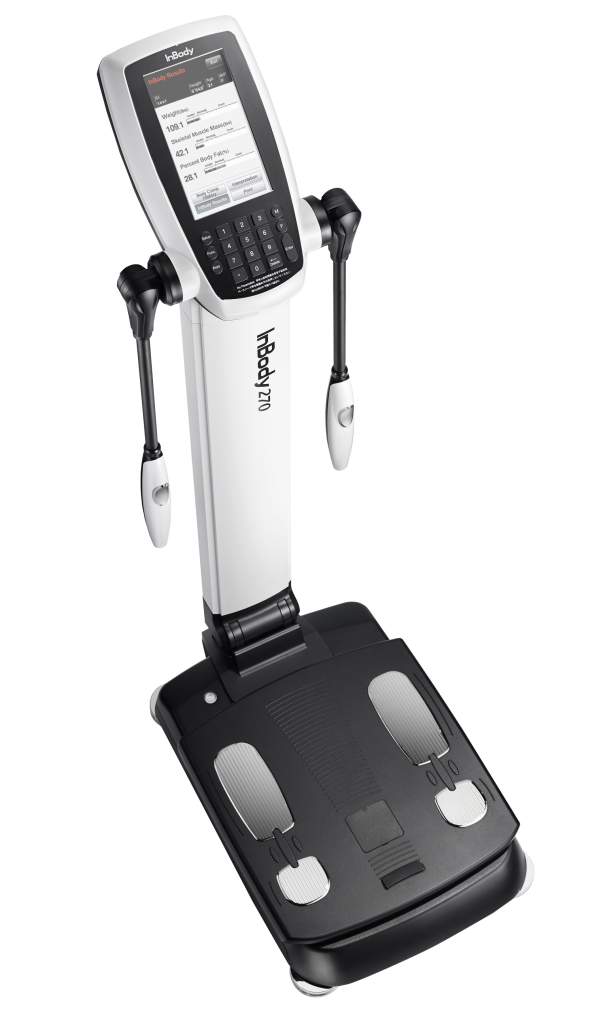InBody Analysis
Body Composition Analysis In Oakville
Understand Lean Body Mass and Body Fat % For Better Results
What Is Body Composition
Body composition is used to describe the makeup of your body with respect to fat mass and fat free mass (muscles, bones, connective tissue and organs). While body weight is a component to understanding body composition, it will never give a complete picture of what is happening in the body with respect to fat and fat free mass. If your weight changes for example, is it from loss or gain of muscle or fat? At Nova, we use the InBody analysis to measure your body composition.
Its Quick!
The analysis takes 2 minutes. Our coaches then review the information with you so plan for 15 minutes total.
Its Easy!
Show up and stand on our InBody analysis machine. No sweat, no warm up. We make it easy to plan your fitness.
It's a Benchmark!
Our trainers use world class technology and education to utilize the data from our InBody analysis machine, and the very best of exercise training methodology to help you target the results you want.
Only $54.99
Free for members. Non members are welcome to come in for an InBody analysis at a cost of $54.99 per visit. The analysis with interpretation from our staff takes at most 15 minutes.
The InBody Analysis
Losing weight can be important however losing body fat and increasing muscle mass is of higher relevance when it comes to health and to those really serious about fat loss or muscle building.
At Nova Health Club, we utilize the InBody bioelectrical impedance machine to measure your body composition. Our InBody scan provides a comprehensive view of body muscle and fat mass. With 8 electrode points, it is one of the most accurate measuring tools on the market today.
A complete body composition analysis that looks at fat vs muscle is a much smarter way to measure and track changes in your body because in terms of muscle and fat, it tells you exactly what is being lost or gained.
Other metrics provided by the InBody:
- Hydration Level
- Basal Metabolic Rate (caloric needs of the body in a 24 hour period).
- Segmental Lean Analysis (comparing muscle and fat mass in different parts of the body).
When it comes to improving the body composition for our clients, we utilize InBody data to create customized workout, nutrition and lifestyle plans to support your fat loss and muscle goals.
Packages Available:
- Drop in (1 scan)
- Month (4 scans)
- 3 Months (12 scans)
- ***Free scans available for those doing nutrition or transformation coaching
Having good body composition is an objective metric that reflects how healthy and fit you are. When you have a healthy body composition you will also look and feel better.
What Should My Body Fat Percentage Be?
Clinically, having 'good' body composition means you are in a healthy and fit range as per the chart on the right.
The average female should have the goal of being between 15-25% body fat while the average male should aim to be between 10-20% body fat.
| Body Fat % Range | Men | Women |
|---|---|---|
| Competitive Athlele (Peak) | 3-6% | 9-12% |
| Very Lean (Exellent) | <10% | <15% |
| Lean (Good) | 10-14% | 16-20% |
| Satisfactory | 15-19% | 21-30% |
| Borderline | 20-25% | 31-40% |
| Overweight | >25% | >40% |



